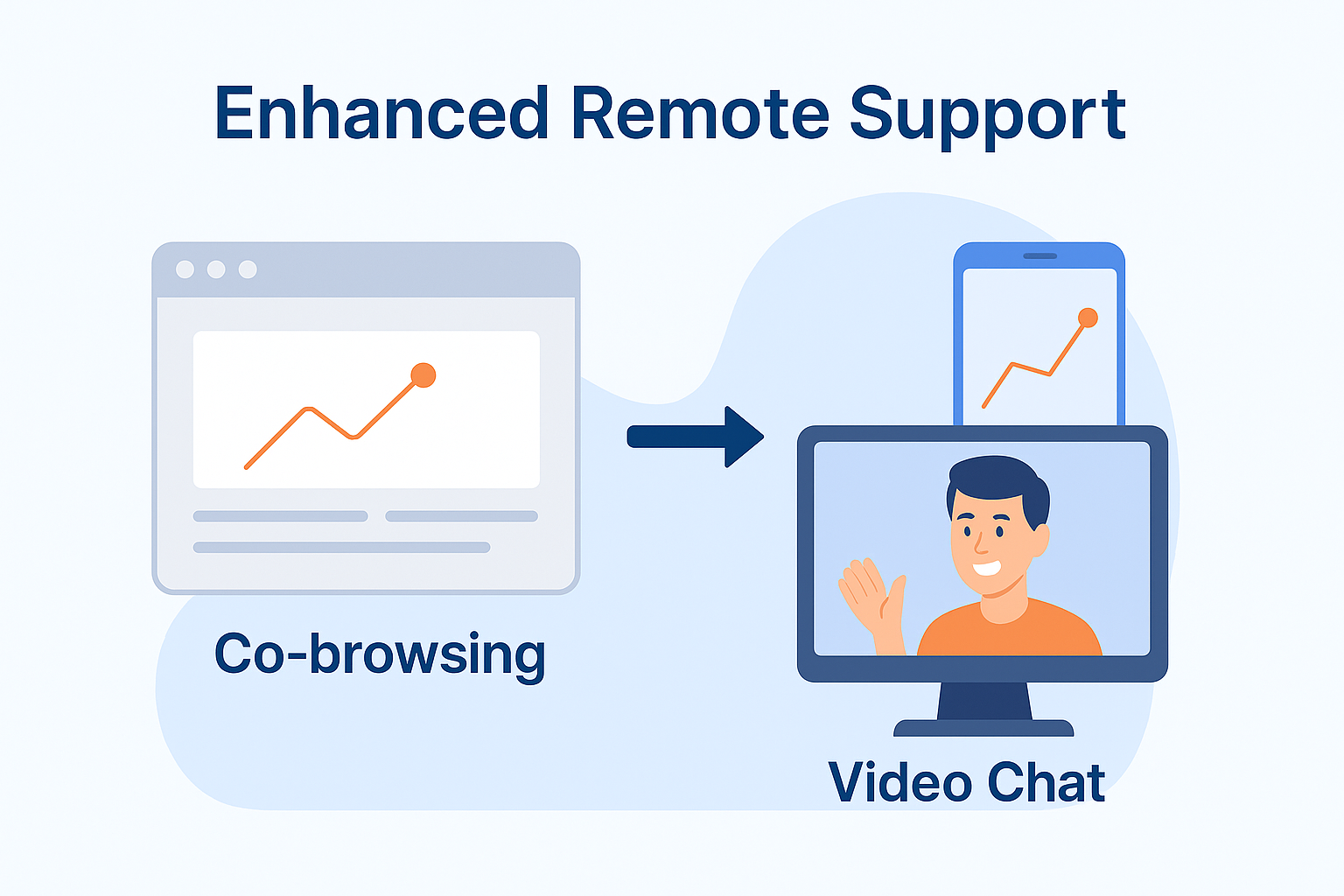Reviewing the 6 Top Remote Support Software Options for 2021
Remote support software is a necessity for most industries today.
After a global pandemic forced most industries to adopt at least a hybrid version of telecommuting, empowering the remote workforce became essential. The software and technology that made it possible for remote workers to be as efficient - and in some cases even more efficient - as they were in the office provided a tremendous value to every enterprise.
Remote support software is one such piece of technology. But all software is not equal, especially considering that every business is unique, with different needs and requirements for their support software functionality. It’s important to match your company's needs with the software that best meets those needs in particular.
In this article, we’re reviewing some of the top remote support software options available today, so you can easily and quickly see which solutions should be included in your tech stack.
Remote Support Software Reviews
A quick caveat to the reviews below: labeling all of these platforms as “customer support software” is an extensive umbrella term. And it’s difficult to really compare and contrast the leading tools using that term as a qualifier.
It’s kind of like someone reviewing the top carpentry tools for building a new home. One of the most popular tools would be a hammer, and a saw - both required to get the job done. However, contrasting the tools against each other becomes problematic because it’s nearly impossible to drive a nail using a saw. And if you use a hammer to cut a board, it’s probably not going to be usable when you’re done.
The same can be said for customer support software. There are different tools for different kinds of support.
- The Meetings Tools: These are tools, like Zoom, that are focused on the faces and information sharing of person-to-person. They can be one-to-many, but the exchange of value in terms of support is informational and relational.
- The Computer Tools: These are tools, like Anydesk, that are focused on software, troubleshooting desktops, settings, and bugs inside an operating system or software.
- The Remote Visual Support Tools: These tools are focused on equipment or the environment, whether you are troubleshooting it or just inspecting it.
Unlike trying to drive a nail with a saw, most of these tools can be forced into action that they were not built to do. For example, with Zoom, there is a functionality to do what the computer-focused tools are built to do. But while there is the ability to force these tools to be effective outside of their “wheelhouse,” so to speak, efficiency and effectiveness are often the casualties of doing so.
When measuring the value of a customer support software or platform, it’s important to understand what the platform was built for and what kind of platform you need for a specific purpose. Connecting the right tools with the right job will make both the customer support professional (and the carpenter) much better at what they do.
1. Zoom
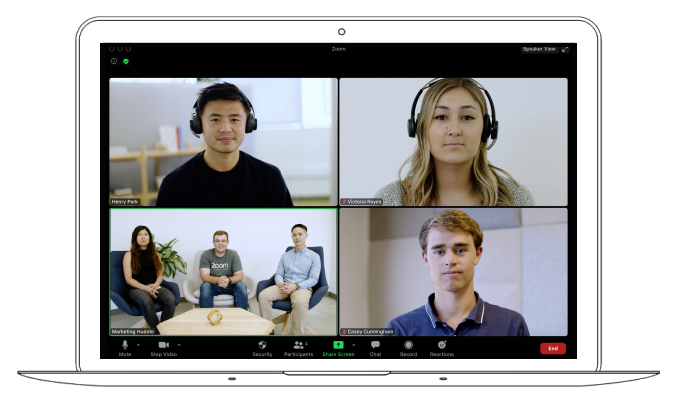
Zoom is one of the most popular in terms of brand awareness since the Pandemic of 2020. Everyone, from giant enterprises to small families were using Zoom to conduct webinars and meetings, and have face-to-face interactions.
Many companies rely on Zoom as a customer support tool as well, thanks to the high-quality video conferencing, the ability to share screens, record meetings and even the ability to control each other’s computers remotely.
The Pros of Zoom
- Zoom can support large audiences into the tens of thousands, which makes one-to-many presentations or support sessions easy.
- Zoom is easy to use and most people find it intuitive.
- Easy sharing of screens and remote computer control.
- On-screen live annotation to enhance instruction.
- The ability to call in from a phone when a computer/webcam is not available, or in low-bandwidth situations.
- You can schedule support sessions and Google Calendar integration is easy and effective.
The Cons of Zoom
- Billing is needlessly complicated, with a lot of different account levels and add-ons.
- The web-based version of the app has limited functionality compared to the software.
- On a mobile device, the customer would have to download and install Zoom before being able to join a support session.
Zoom Pricing
The pricing of Zoom is somewhat of a disadvantage for companies who want to use it as customer support software. Every user has a license, and there are a lot of different options for each license, with add-ons and such. Zoom can get expensive, and there are a variety of “flavors” of Zoom, depending on how you want to use it. You can get the full pricing descriptions here.
For the basic meetings package, licenses start at $149 per year per user.
2. GoToAssist
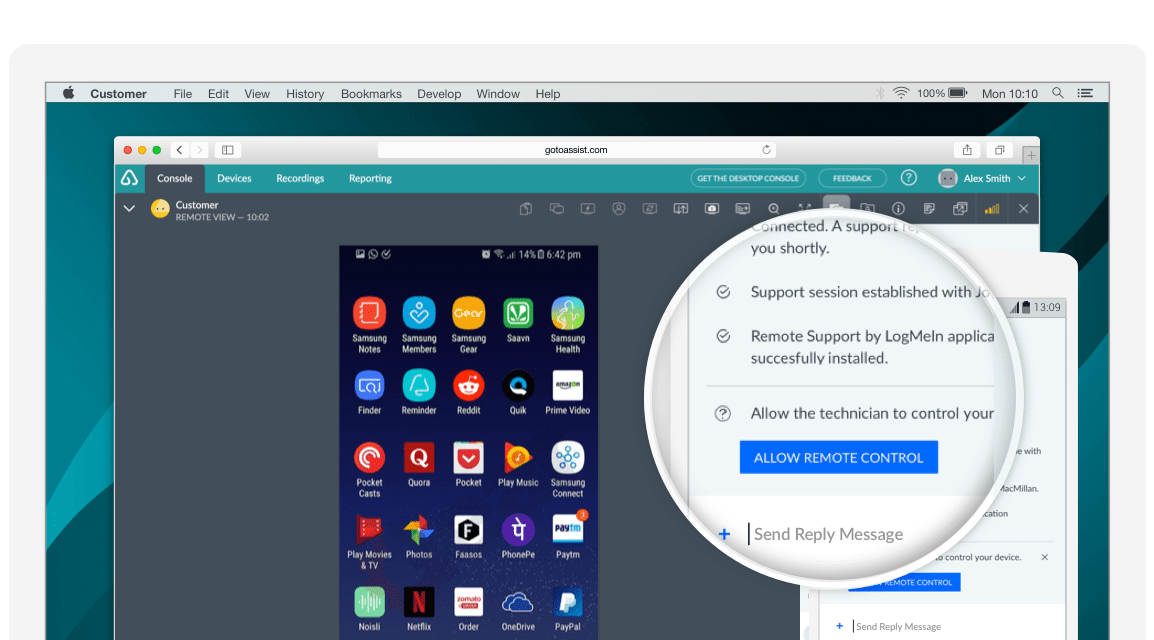
While this software title is not as much of a household name, most people will recognize the branding. From the same folks who brought you GoToMeeting, GoToAssist builds on the functionality of the GoToMeeting suite of products to provide a great remote support software for desktop and mobile.
The Pros of GoToAssist
- GoToAssist shines as a remote IT support software solution, thanks to their long-developed client application.
- File transferring between the support machine and the remote customer machine is easy through the application, removing the need to upload to a 3rd party service.
- Remote control features are quite good, allowing the support professional to remotely control the customer’s computer through screen sharing.
- Unattended access is a good feature for internal company support, allowing technicians to remotely service computers whether or not the customer is at the computer.
- The pricing is very easy to understand,
The Cons of GoToAssist
- Connecting with customers can be confusing for some users, even though the developers are working hard to simplify it.
- The customer’s machine must download and install the client to enable remote support.
- The client doesn’t always install correctly, which can be frustrating for the customer.
- The system is mostly built for a computer-to-computer experience. Mobile features are still limited compared to the desktop version.
- Mobile functionality is an account add-on at an additional charge per license.
GoToAssist Pricing
Pricing starts at $69 per user per month. The mobile add-on is a $20 per user per month additional charge.
3. AnyDesk
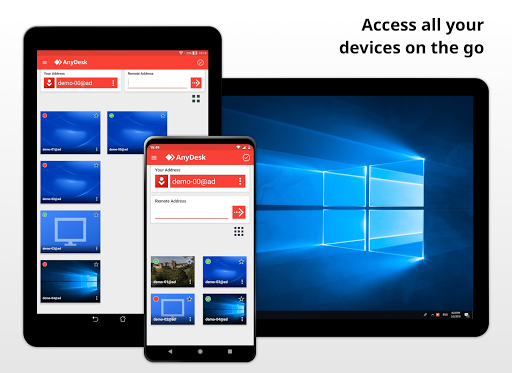
Anydesk is a simple solution for a niche need. It’s remote desktop software, and that’s pretty much it. It allows support technicians to connect and remotely control a client’s computer through either a cloud server or on-premises solution when higher security internal protocols are needed.
The Pros of AnyDesk
- Software companies will find the simplicity of AnyDesk an advantage thanks to the easy and secure remote connection.
- AnyDesk is cross-compatible, so it works with Windows, macOS, Android, iOS, Linux, FreeBSD, Chrome OS, and even Raspberry Pi.
- Their DeskRT codec makes the connection fast, lag-free, and efficient with bandwidth at all times.
The Cons of AnyDesk
- Requires a software download and installation.
- Limited features to remote control of a computer. (Not necessarily a con if that’s what you actually need or want).
Anydesk Pricing
Anydesk pricing starts at $16.90 per month, per user - and each user can use up to three devices.
4. Streem®
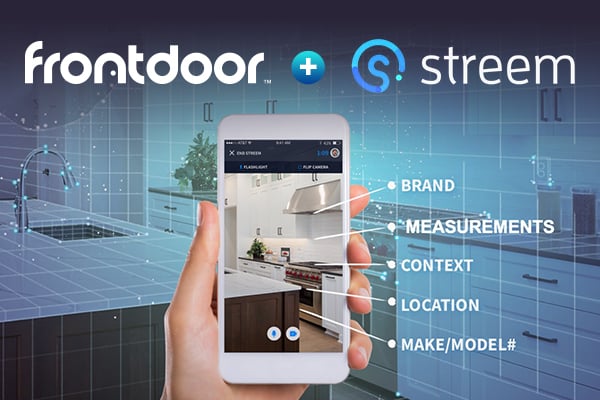
Stream is a remote video chat platform that includes remote video and augmented reality features to provide great support and sales opportunities. Quoting, consultations, troubleshooting, and warranty support is greatly enhanced and more expedient thanks to a powerful Streem platform.
The Pros of Streem
- Streem is more than a support tool for customer-to-support interactions. But it has a powerful backend system for storing information and sharing that information internally for additional support, escalating to higher levels of support, or sharing the support call information, photos, and notes with technicians or salespeople for future reference.
- You can take a photo through the customer’s camera, and the platform can extract the text or number automatically.
- Annotation and an AR laser pointer make visual support more powerful.
- GPS features for field-service technicians.
- You can embed the Streem video calls directly into your existing customer support tools for context and reference.
- Stream integrates with a lot of popular customer support platforms.
- No app downloads are required for the customer.
The Cons of Streem
- Lack of group streams or adding additional people to the calls.
- Some users report a lack of compatibility for some device brands.
- Audio has been a problem for some users, reporting an echo which makes understanding the customer difficult at times.
- A good connection is required for a smooth experience. In low-bandwidth situations, customers report instability in the call quality.
Stream Pricing
Streem’s pricing is based on the account level, not necessarily individual licenses per user. For the Pro plan, you can have up to 10 users and 1,000 minutes worth of calls, plus six months of storage for $499 per month. Full pricing details can be found here.
5. Techsee
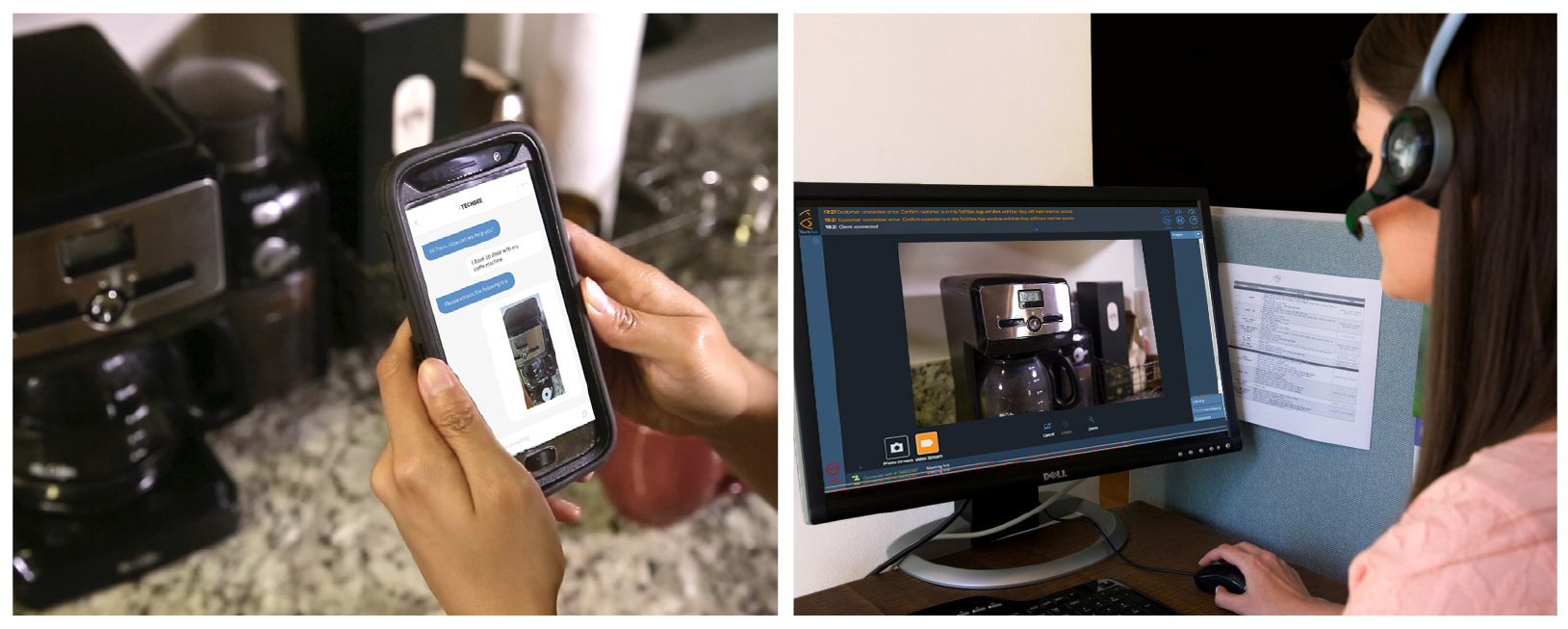
Techsee is a visual contactless assistance platform to provide remote support over video chat, with artificial intelligence and augmented reality support. Somewhat like Streem above, Techsee is a tool that allows companies to quickly connect to a customer’s mobile device and use the device’s camera and microphone to provide real-time visual customer support.
The Pros of Techsee
- Techsee has launched a web-based version that doesn’t require an app download for customers.
- There is a photo mode for fast and easy annotation.
- The app can scan and analyze textual items, like serial numbers and barcodes, using OCR.
- The app integrates into the leading CRM and FSM platforms, like Salesforce, SAP, and Oracle.
- Techsee’s AI technology can automatically recognize a customer’s device, allowing support and sales professionals to instantly pull up information without the customer being required to find make/model numbers.
The Cons of Techsee
- Some users report that the UI is kind of complex, which leads to a learning curve on how to use it to its potential.
- Some report training was needed, thus adding longer onboarding times to get started.
Techsee Pricing
Unfortunately, Techsee does not list its pricing publicly. Contacting sales to get a quote is recommended.
6. Blitzz
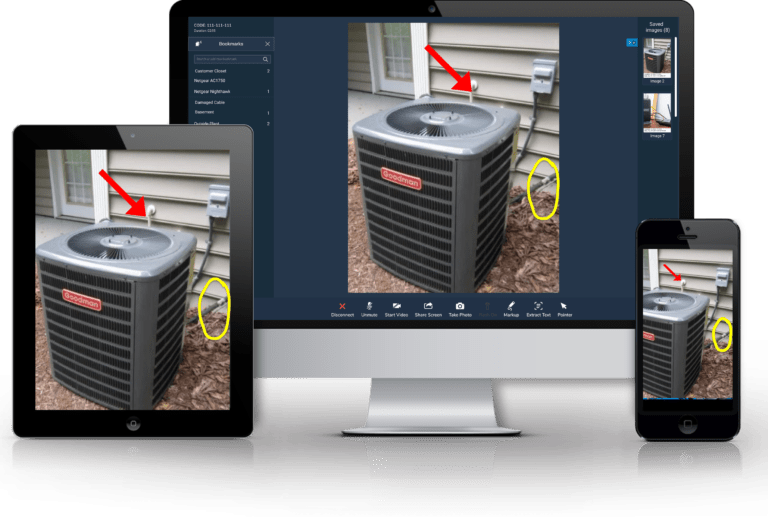
Similar to Streem and Techsee, Blitzz is also a remote video support platform. The difference with Blitzz is that from the ground up, Blitzz has been built to enable powerful AR and AI technology without requiring any app downloads from the customers.
The Pros of Blitzz
- Blitzz is intuitive, with a clean and easy-to-understand user interface. No training is required for users to get the full benefit of the platform.
- Blitzz optimizes for bandwidth usage, adjusting automatically to keep call quality stable.
- Live pointer and annotation make visual assistance more engaging and helpful for the customer.
- Optical character recognition can automatically extract text and numbers from the customer’s video feed.
- There is no app download required for the customer.
The Cons of Blitzz
- With a network bandwidth of less than 540kb/s. Anything lower than 3G performance means the video quality will degrade.
- Since Blitzz works without app downloads through the browser, screen sharing from mobile devices is not currently possible.
- Blitzz works on the most popular operating systems, such as iOS and Android. And it works on popular smart glasses such as NuEyes and Realwear. However, companies that use more obscure platforms and devices are not currently supported, although developers are working on adding support for more devices in the future.
Blitzz Pricing
Blitzz starts at $35 per user per month.
Choosing the Right Remote Support Software
As you can see, there are a lot of different tools that can be used to provide and augment remote support. But even the tools that seem very similar are not the same, especially when it comes to ease of use, user adoption rates, and the value the software will actually provide when put into real-world use situations.
Our recommendation is to try multiple platforms and let the quality of the software and the quality of support from the vendor help you determine the best fit for your business. Putting the software through a real-world trial is the best way to understand how it will perform when put into practice.
If you are interested in trying out Blitzz, you can jump into the platform right now and give it a test drive.




